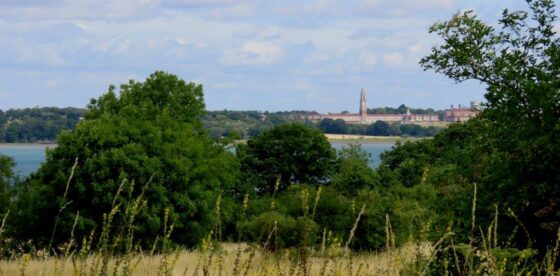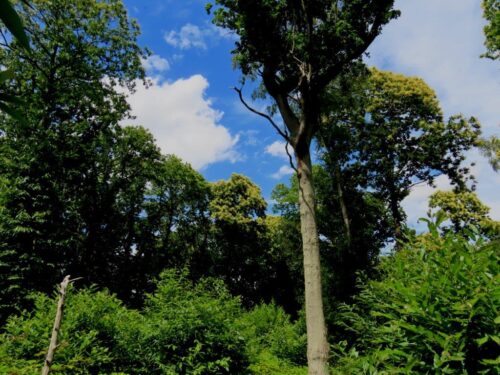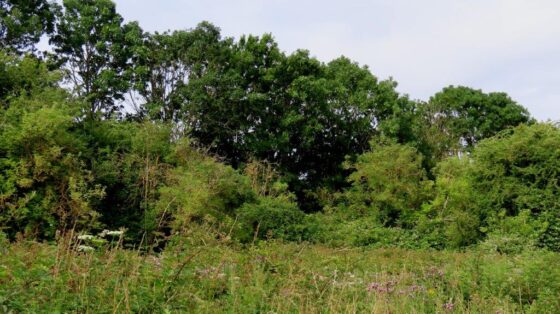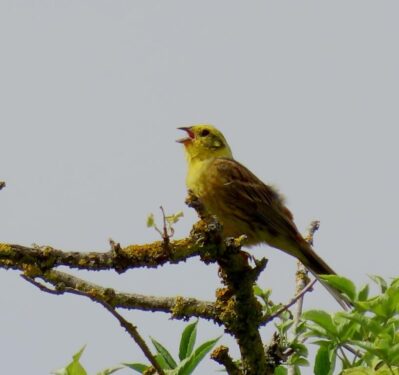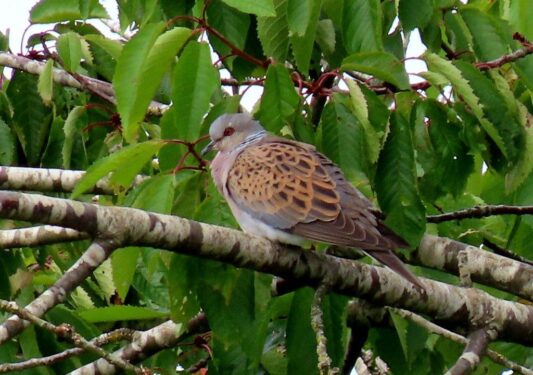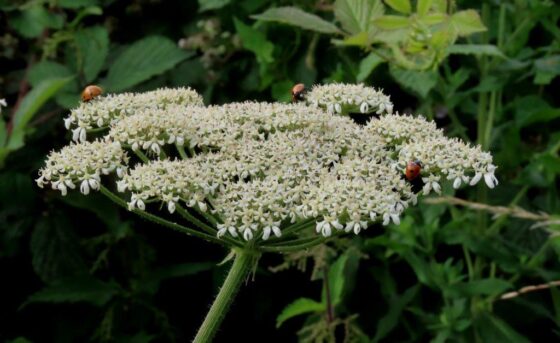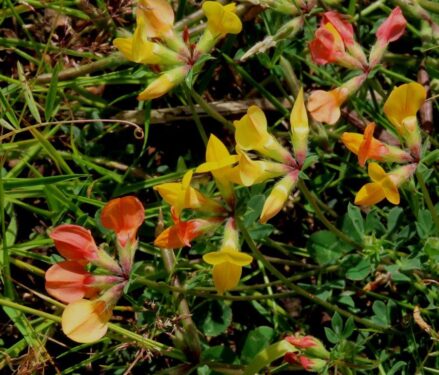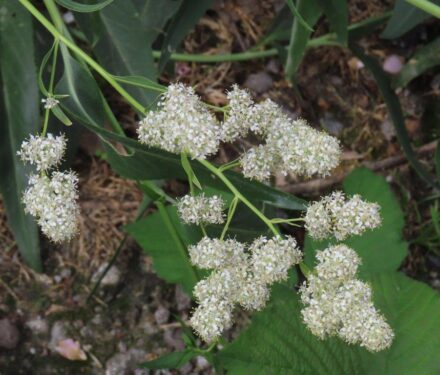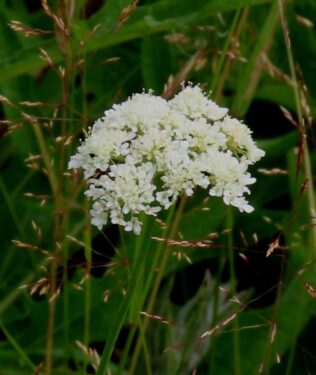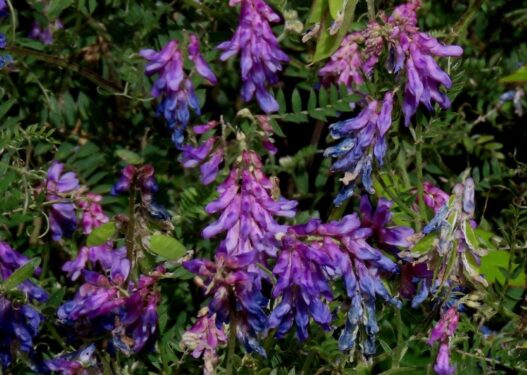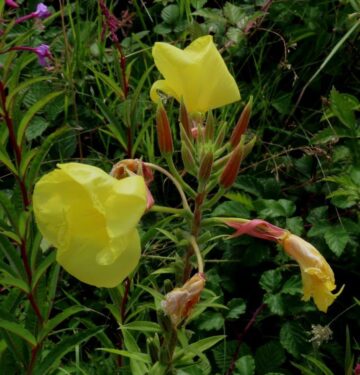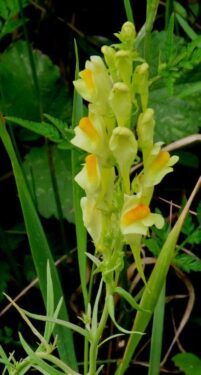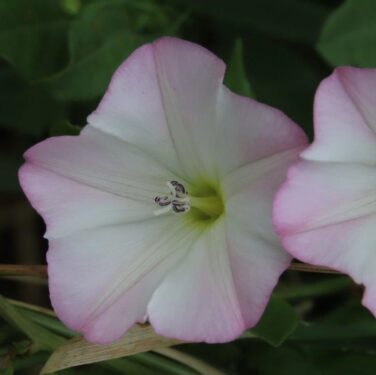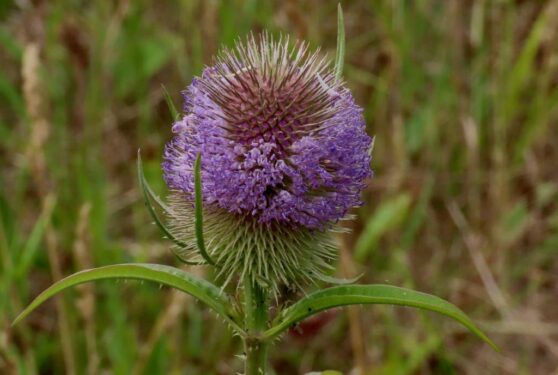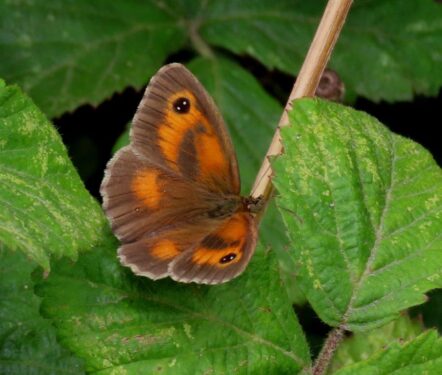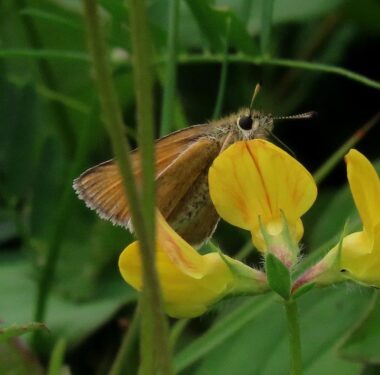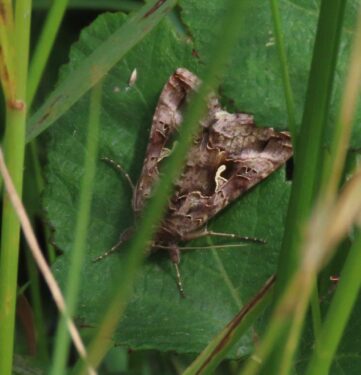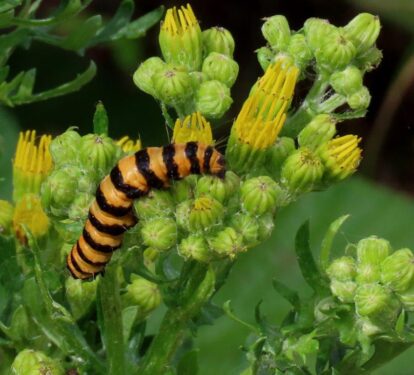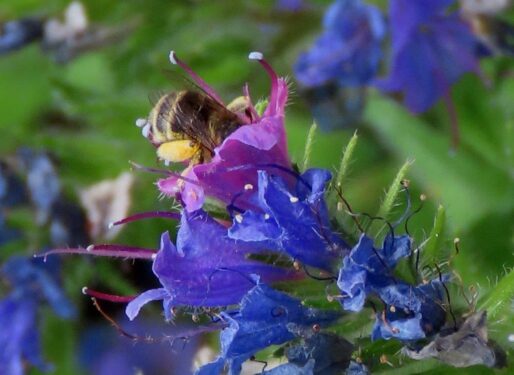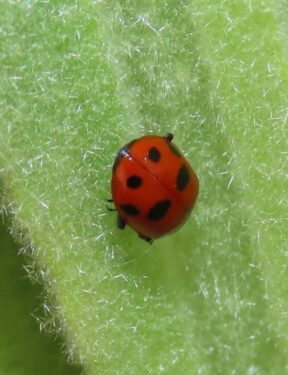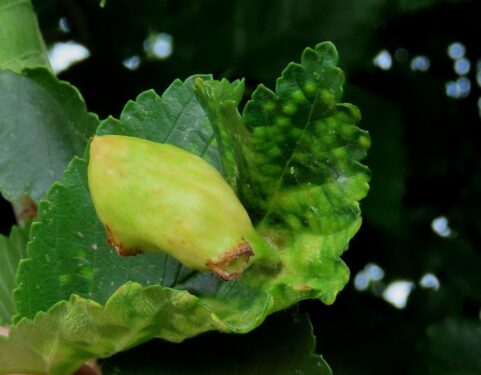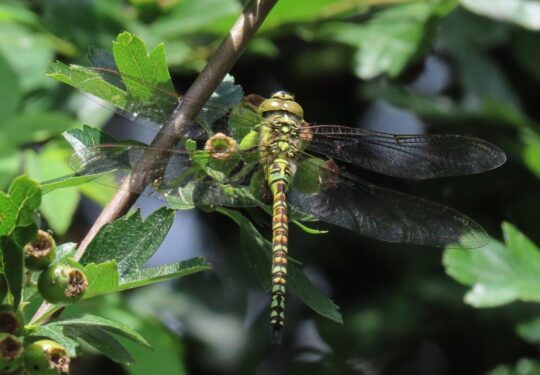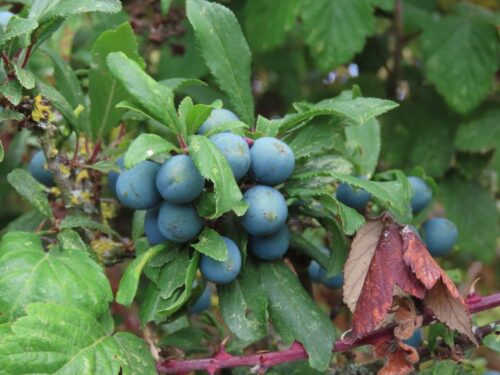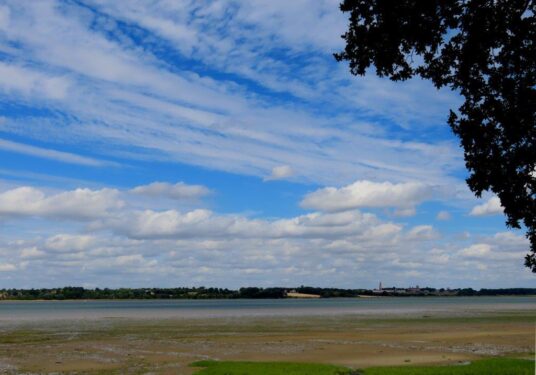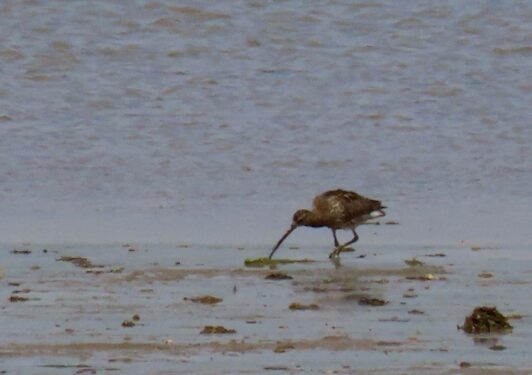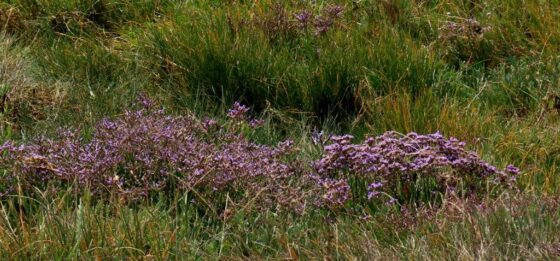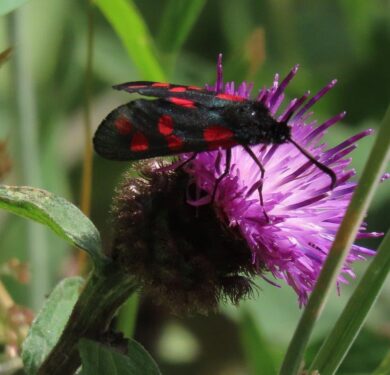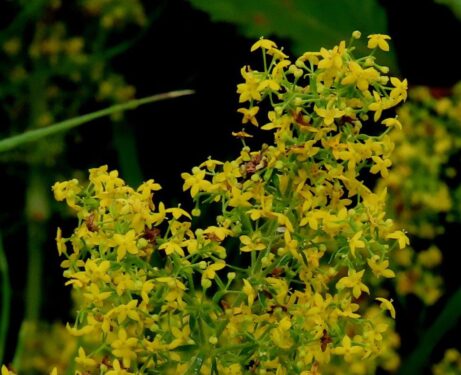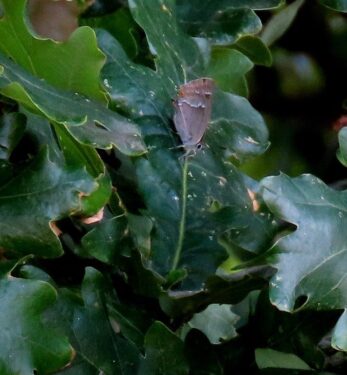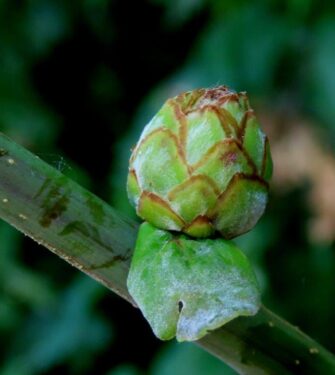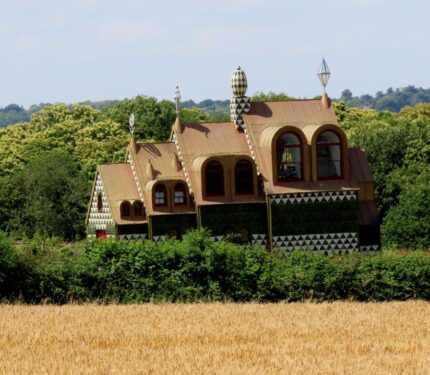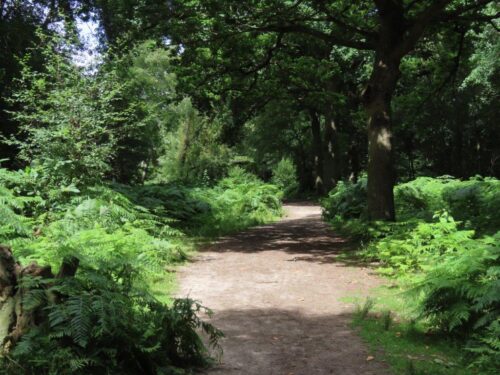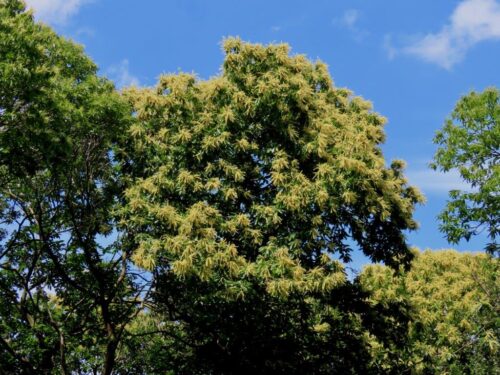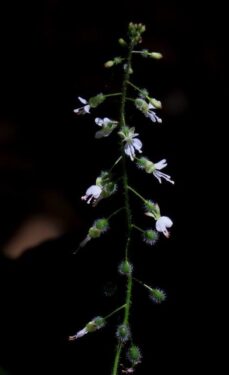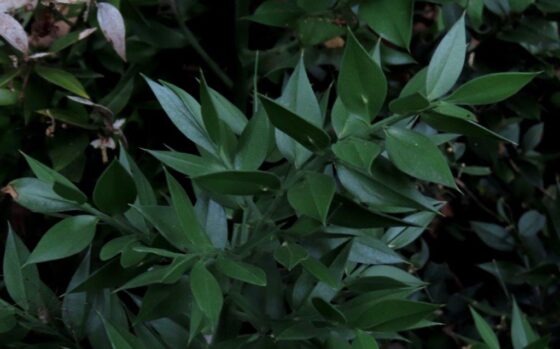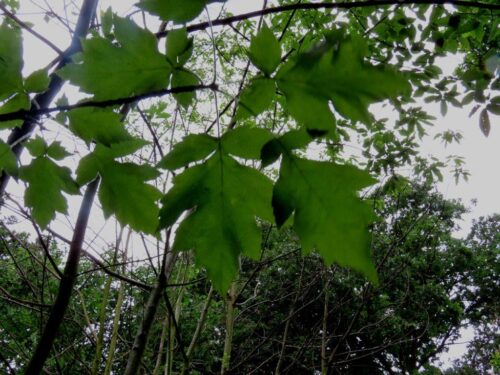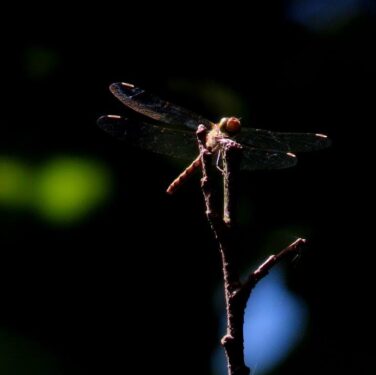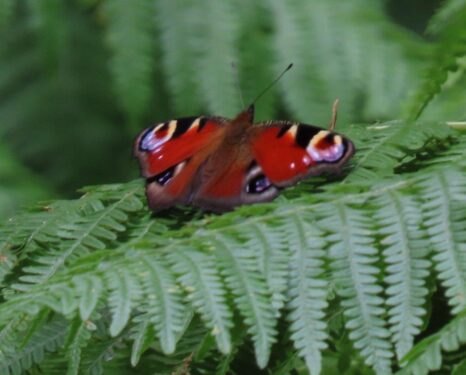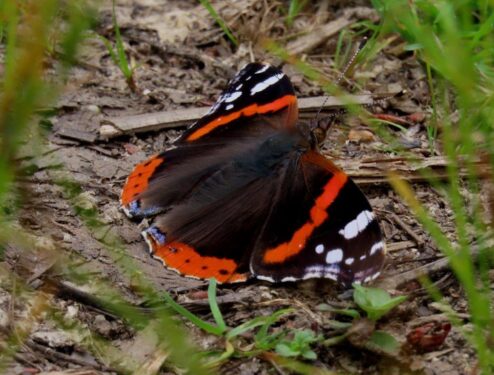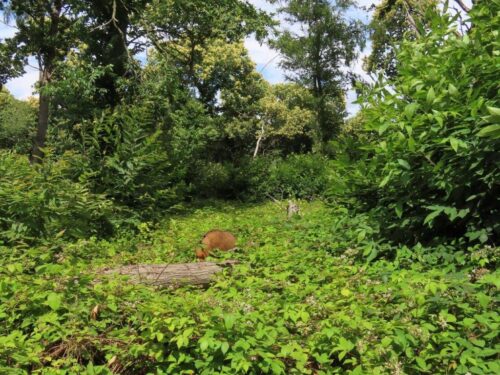The forecast was for rain, more rain and a side order of thunder. Real life brought us a gloomy start, followed by several hours of hot sunshine, then building cloud and rising humidity, and eventually a shower, just as we arrived back at the carpark at the end of our walks. It is all in the timing!
This by-now-traditional midsummer Naturetrek day trip focused on two main sites, Wrabness Nature Reserve (Essex Wildlife Trust) and Stour Wood (RSPB). Although butterflies and birds are billed as the main attractions, as always we looked at everything from plants to birds, all manner of insects, landscape, geology and architecture, the full range of the natural and not-so natural worlds.
Wrabness Nature Reserve, as a former mine depot, is a brownfield site with all the diversity shown by the best of such sites. Farmland and scrubland birds were much in evidence, including Yellowhammers, Linnets, Goldfinches and Whitethroats in song, all to a constant backdrop of Skylarks.
At the heart of the reserve the real stars showed well, with half a dozen Turtle Doves seen and perhaps four of those in purring song, that glorious half-forgotten sound of summers sadly passed. This site is now just about the only reliable one for Turtle Doves in Essex.
Between the scrub patches, the plants provided a riot of colour and a feast for every insect. From Hogweed to Bird’s-foot-trefoil, scarce species such Dittander and Corky-fruited Water-dropwort, beautiful banks of Tufted Vetch and many more, it was a wonderful multicultural mix of plants from all over the world, the very best of brownfields.
The diversity of flowers in the shelter of the scrub (the stiff breeze was a constant feature of the day) meant that insects were everywhere. Gatekeepers, Essex Skippers and Small Skippers were the most abundant butterflies, and several Silver-Y moths put in an appearance, part of their very recent significant influx from the Continent.
Cinnabar caterpillars were chomping on Ragwort, Green-eyed Flower-bees nectared busily, buzzily on Viper’s Bugloss, and other sightings included Adonis Ladybird and Southern Hawker dragonfly, fig galls of the aphid Tetraneura ulmi on Elm leaves, and bountiful sloes developing on Blackthorn
Down on the Stour Estuary, sadly not a single Sand Martin to be seen: the usual colony of hundreds has for some unknown reason failed to materialise here this year. Out on the mud, the first returning Black-tailed Godwits, Curlews and Oystercatchers were feeding in the heat-haze along the distant shoreline, alongside Little Egrets and a surprising (for the site in summer) Great Black-backed Gull or two, while closer in, the saltmarsh fringe was just developing its summer-purple hue of Sea-lavender.
The field margins between Wrabness and the woods produced some lovely sights, Common Knapweed set off against banks of Lady’s Bedstraw and bedecked with Six-spot Burnets.
The hedgerow oaks were sprouting artichoke galls and giving shade to Purple Hairstreaks, while that amazing brainchild of Grayson Perry, ‘A House for Essex’, as always provoked much interest and discussion.
And so into Stour Wood, the air heavy with the mushroomy-scent of Sweet Chestnuts in full flower.
Few other flowers were apparent (return in April for the swathes of Wood Anemones and Bluebells) other than Enchanter’s Nightshade, although Butcher’s-broom and Wild Service-tree added their ancient woodland allure to the scene.
Brown Hawkers and Common Darters were patrolling the rides alongside numerous browns and nymphalid butterflies…
…although the woodland specialities here were restricted to a few fly-past Silver-washed Fritillaries and at the very end of the walk a White Admiral that almost landed upon us. Lovely to see and good flight views, although the lack of nectar sources (even Brambles seem sparse this year) gave us no opportunity for photography.
A great day out, with something for everyone!
